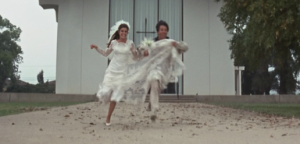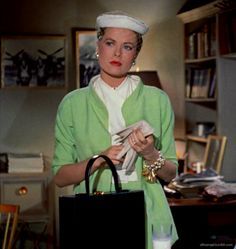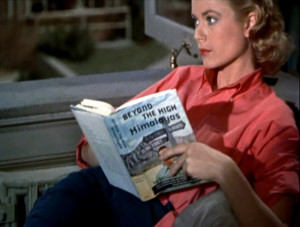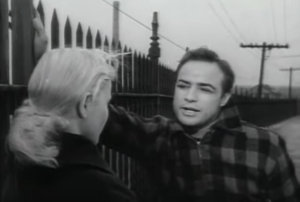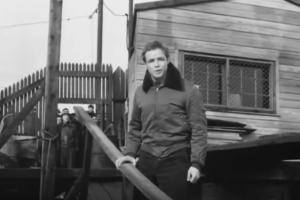So my father has worked at Bell Labs for over 20 years and runs their historical archives. As you may remember, Bell Labs was one of the companies that worked with producers of 2001: A Space Odyssey. to develop unique props for the film. My father was able to provide me with some interesting materials and facts regarding the company’s relationship with Kubrick and Odyssey.
Bell Labs was was responsible for the picture-phone unit that Dr. Floyd uses to call his daughter from space in the beginning of the movie. Arthur C. Clarke (author of The Sentinel) knew John Pierce, who was an engineer at Bell Labs most known for inventing the Telstar Satellite and his science fiction writing. Clarke worked with John Noll, another engineer at Bell Labs, to design the prototype of the unit. A couple mockup drawings are depicted below. Noll and Pierce had sent the drawings as well as a four-page memo of how the scene should be depicted to the producers of the film and never heard back from them. It was not until years later when they saw the film that they realized their designs and script had actually been used!
What is even more interesting, however, is that Noll almost got into trouble for submitting the Bell System seal to producers who then displayed the seal outside of the video-phone booth in the movie (shown below). AT&T accused Bell System of violating a consent decree, which outlined that the Bell System could only cover domestic telecommunication. By depicting the logo in a space station in the film, it was implied that the System worked in space, which violated the consent decree … crazy right? Fortunately, they were able to settle the dispute.
The picture-phone unit in the film was of course fabricated, but it was modeled off of technology that did exist at the time. I was able to snag a picture of the actual prototype of the first picture-phone, which my dad has in his office (shown below). If you look towards the upper left of the phone, you see a camera lens that closely resembles HAL, however this is only coincidental. To the right is a photo of one of the picture phone’s engineer’s, L.H. Meacham, using the phone to speak with its other engineer, A.D. Hall in 1964.
Furthermore, the song HAL sings “Daisy Bell” as he is dying, was synthesized by distinguished scientists Arthur Kelly and Carol Lochbaum at Bell Labs. Matt Mathews coded the accompaniment. Though computer-generated voice was being tested by other companies at the time, these two scientists’ work was considered the most advanced. Arthur C. Clarke actually came to Bell Labs to listen to the song. The sound bite below is the recording that Clarke heard at Bell Labs. It was coded on an IBM 7094 computer in 1961.
It is interesting how Odyssey depicted a precursor to modern technology. In one of the articles from 1993 that my Dad passed on to me, Research Vice President of AT&T, Arno Penzias, mentioned that it was important to realize that the actual technology in 2001 would most likely not be as “artistically interesting” as depicted in the film. He goes on to say that we will continue to experience the:
“celebration of a very interesting and productive connection between human beings and the information expertise that makes life better and more enriching.”
Penzias may have not foreseen the rapid advancement of technology that seemed to kick off around 2000, but he was definitely correct on the strengthening relationship between humans and machines. It is entertaining to look back at comments such as his when modern technology allows us to FaceTime with others at anytime, anywhere from the palm of our hands.
——————–
Sources:
I obtained this information from my Dad who works at Bell Labs Archives, and also a Bell Labs news publications from April of 1993 that John Noll passed on to my Dad for me to refer to for this post.
http://home.williampoundstone.net/Kelly.htm
http://www.wide-eyed-webs.com/instation/daisy.html


















